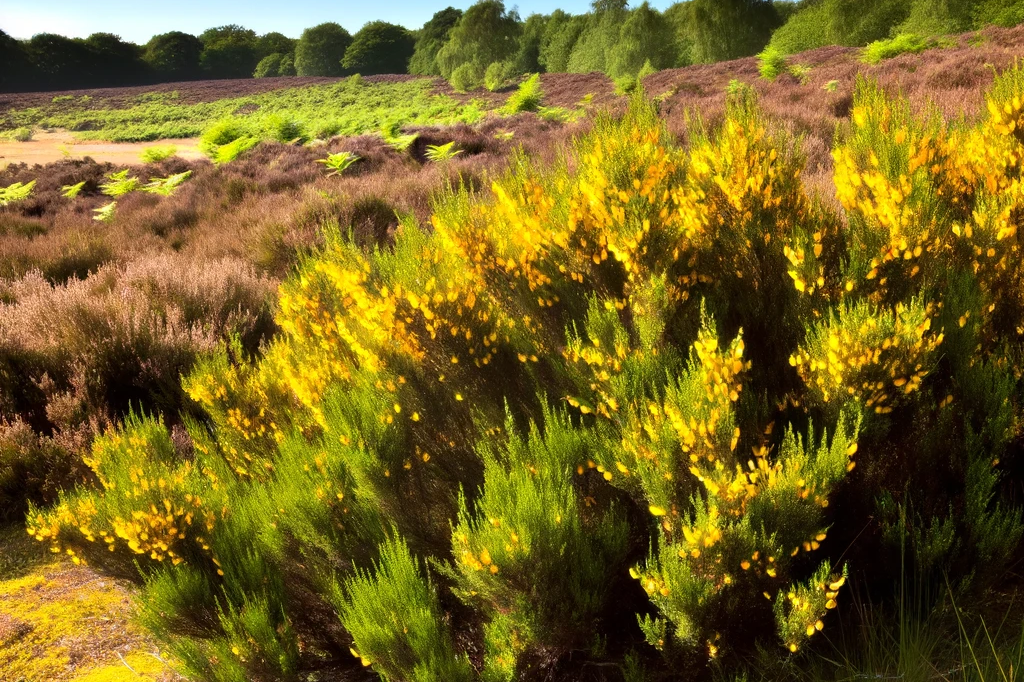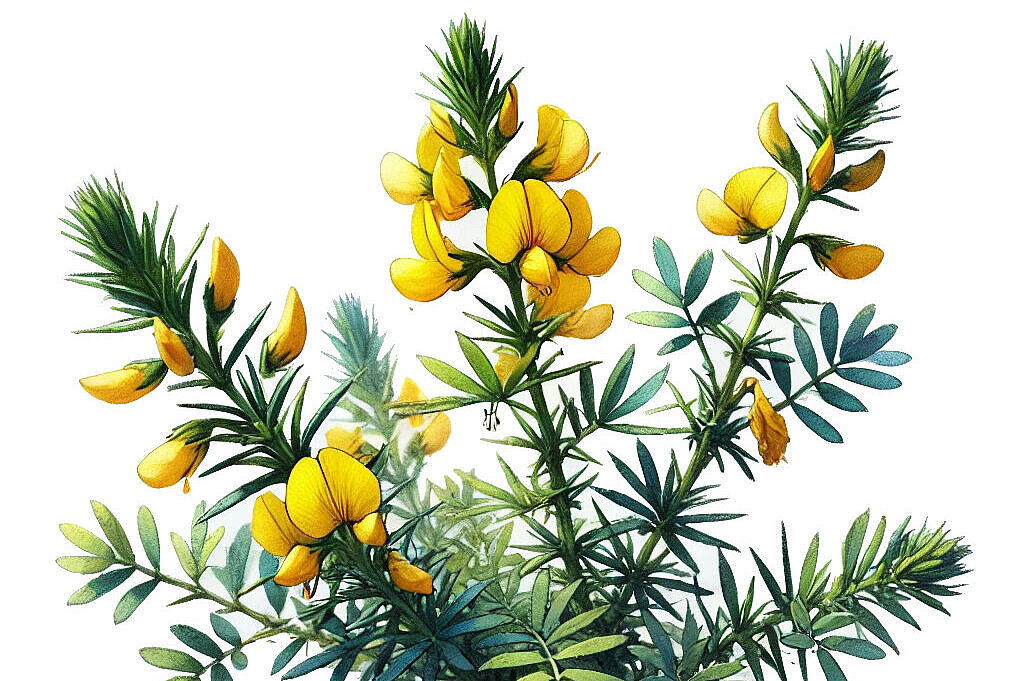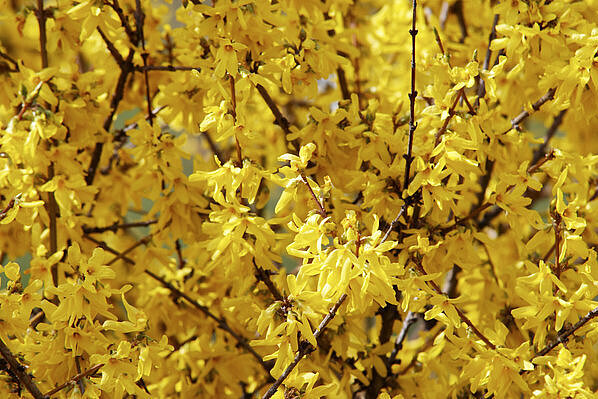Gorse

What is broom?
Gorse (Genista and Cytisus) belongs to the Fabaceae (legume) family and includes various species that are native to Europe, North Africa and parts of Asia. These plants are characterized by their bright, often yellow flowers, which appear in spring and early summer. Gorse plants are known for their adaptability and hardiness and can thrive in a variety of environments, from open fields to rocky slopes.
Characteristics and occurrence
- Flowering time: Most gorse species flower in spring and early summer.
- Locations: Gorse is widespread in many parts of Europe and prefers sunny, open locations.
- Growth form: Depending on the species, gorse can grow as a low shrub or as a taller bush.
Effects on dogs
Benefits
There are no direct benefits to dogs from gorse, as it is not used as a food source or for medicinal purposes.
Disadvantages
- Toxicity: Many species of gorse contain toxic substances that can cause symptoms of poisoning in dogs if consumed. Symptoms of gorse poisoning can include nausea, vomiting, diarrhea and in severe cases even heart problems and coma.
- Thorns and spines: Some gorse species have sharp thorns that can cause harm to dogs that run through or near the plants.
Recommendations for dog owners
To ensure the safety of your dog, it is important to take the following precautions:
- Avoid contact: Keep your dog away from gorse plants, especially during nature walks.
- Watch your pet: Make sure your dog does not nibble or eat plants when you are out in gorse-rich areas.
- React quickly: If your dog has eaten gorse and shows signs of poisoning, seek veterinary help immediately.
Although gorse is undoubtedly an asset to the landscape with its bright flowers, it poses a potential danger to dogs. The toxins contained in the plant can cause serious health problems and the physical nature of some species can lead to injury. As a dog owner, it is therefore important to be aware of these risks and take appropriate measures to ensure the safety of your four-legged friend. Ultimately, caution is the key to ensuring that both the natural beauty of the broom and the health and well-being of your dog are protected.
If you notice any signs of hypersensitivity or poisoning in your dog, you should see your vet immediately. We are not a substitute for a vet, but we try to be as accurate as possible. Every dog reacts differently and we recommend you get a second opinion or consult your vet if in doubt.
Stay healthy and take good care of your four-legged friend!😊
Similar to Gorse
Broom broom (Cytisus scoparius) is a flowering plant that is native to Europe and has spread to various parts of the world. It is known for its bright yellow flowers and is often planted for its...
Gorse is a hardy perennial plant known for its dense, green branches and bright yellow flowers. Originally native to Europe, it has spread to different parts of the world and is prized for both its...
Laburnum is a genus of plants in the legume family (Fabaceae), which also includes peas and beans. There are three types of laburnum: the common laburnum (Laburnum anagyroides), the alpine laburnum...
Heathers (Calluna vulgaris), often referred to simply as heather, are evergreen shrubs known for their striking purple flowers that transform late summer and autumn landscapes into a sea of color....



